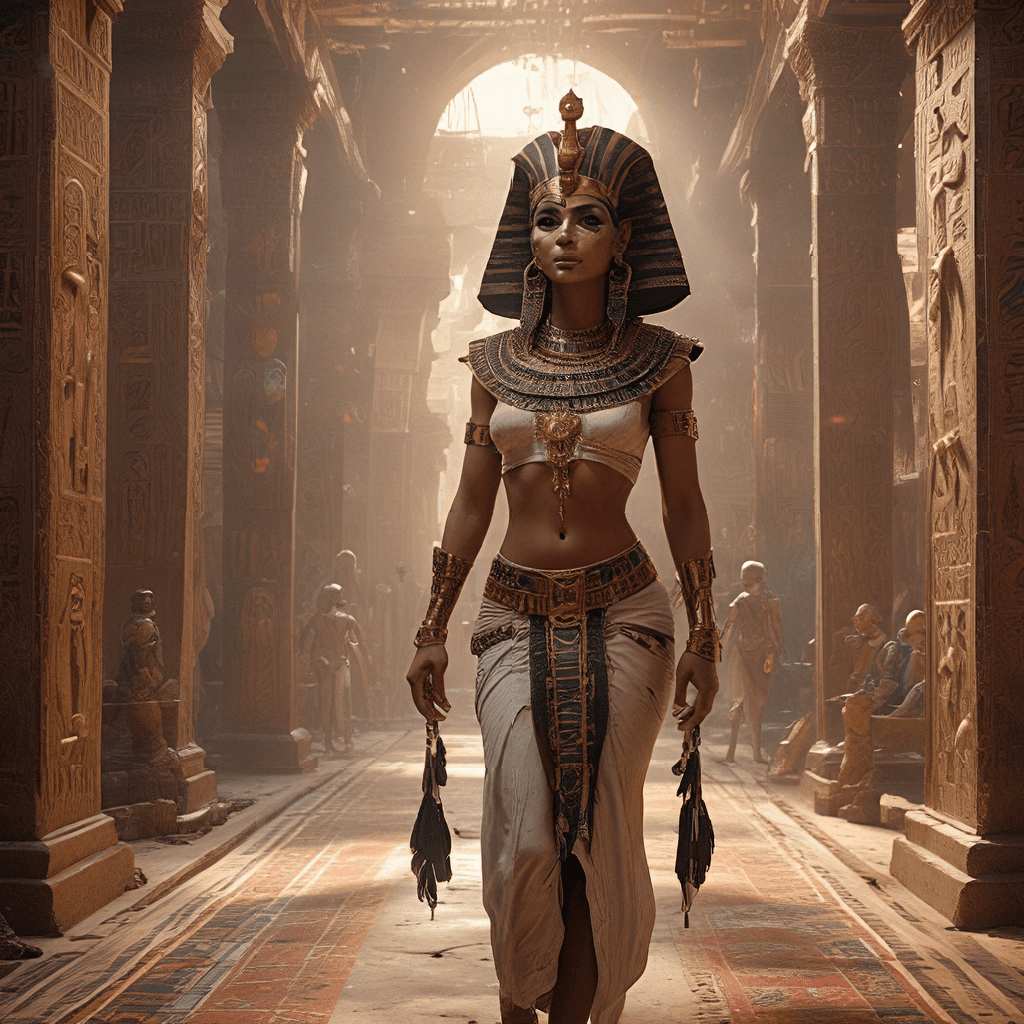1. Introduction: The Eternal Journey
Ancient Egyptians believed strongly in the afterlife, a journey they believed began with death and continued throughout eternity. Their obsession with preserving the body and spirit was central to their lives and beliefs. This fascination stemmed from their desire to maintain a connection with the deceased and ensure their well-being in the next world. Their beliefs were centered around a concept called “Ma’at,” which represented cosmic order, harmony, and truth. Ma’at was believed to be the foundation of the universe and the key to a successful journey into the afterlife.
2. The Weighing of the Heart
One of the most iconic aspects of the Egyptian afterlife was the “Weighing of the Heart,” a crucial judgment that determined the fate of the deceased. The ceremony took place in the “Hall of Two Truths,” where Anubis, the jackal-headed god of mummification and the afterlife, weighed the heart of the deceased against the feather of Ma’at. Thoth, the god of wisdom and knowledge, acted as the scribe, recording the outcome of the judgment. A heart lighter than the feather of Ma’at meant that the deceased had lived a just and righteous life, earning them passage into the afterlife. However, a heavier heart signified a life filled with sin and wrongdoing, leading to a fate worse than death.
3. The Underworld: Navigating the Afterlife
After the Weighing of the Heart, the deceased embarked on a treacherous journey through the “Duat,” the underworld. This journey was fraught with perils, filled with terrifying monsters and challenging trials. The deceased had to navigate through dark tunnels, traverse treacherous lakes, and even confront the monstrous god Ammit, who devoured the souls deemed unworthy. The deceased’s knowledge and preparation played a crucial role in their success. They relied on spells and incantations from the “Book of the Dead” to guide them safely through the underworld and overcome the obstacles that lay ahead.
4. The Book of the Dead: A Journey Guide
The “Book of the Dead” was a collection of spells, incantations, and prayers designed to aid the deceased in their journey through the afterlife. It contained instructions for navigating the underworld, spells for protection against evil spirits, and prayers for guidance from the gods. The “negative confession” was a crucial part of the “Book of the Dead,” where the deceased had to proclaim their innocence before Osiris, the god of the underworld. This confession was a testament to their moral conduct and a plea for forgiveness for any wrongdoings committed during their life.
5. The Osirian Myth: A Blueprint for the Afterlife
The myth of Osiris, Isis, and Horus was deeply intertwined with the Egyptian belief in the afterlife. Osiris, the god of the underworld, was murdered by his jealous brother Seth. Isis, Osiris’s wife, resurrected him, and their son Horus eventually avenged his father’s death. This story became a blueprint for the deceased’s journey into the afterlife. Osiris’s death and resurrection symbolized the cycle of life, death, and rebirth. The deceased sought to become like Osiris, achieving immortality and eternal life in the afterlife.
6. Mummification: Preserving the Body for Eternity
Mummification was a complex and intricate process, considered essential for preserving the body and allowing the spirit to continue its journey into the afterlife. The Egyptians believed that the preserved body was vital for the ka, the life-force, and the ba, the personality, to reside in the afterlife. The process involved removing the internal organs, drying the body with natron salt, and wrapping it in linen bandages. The mummification was a meticulous and time-consuming process, overseen by skilled priests and embalmers. The belief was that the more carefully the body was preserved, the more likely the deceased would enjoy a successful journey to the afterlife.
7. Funerary Rituals: Honoring the Deceased
Funerary rituals were integral to the Egyptian belief in the afterlife, providing a way to honor the deceased and facilitate their smooth transition to the next world. These rituals involved elaborate ceremonies, offerings, and sacrifices to appease the gods and ensure the deceased’s well-being. The family of the deceased played a significant role, performing rituals and carrying out offerings, ensuring the continued care of their loved one in the afterlife. The role of the ka and ba was also central to funerary rituals. Offerings were made to nourish the ka, while prayers and incantations were used to guide the ba to the afterlife.
8. The Role of Gods and Goddesses in the Afterlife
The Egyptian pantheon played a vital role in shaping the beliefs and rituals surrounding the afterlife. Each god or goddess had specific roles and responsibilities, influencing the deceased’s journey and their ultimate fate. The gods of the underworld, such as Osiris, Anubis, and Thoth, presided over the judgment and passage into the afterlife. Other gods and goddesses, like Isis and Horus, offered protection and guidance to the deceased. The Egyptians believed that a harmonious relationship with these deities was crucial for a successful journey to the afterlife.




